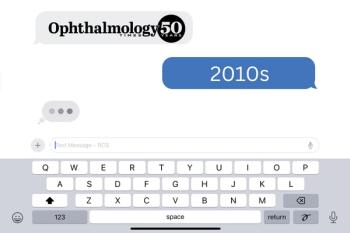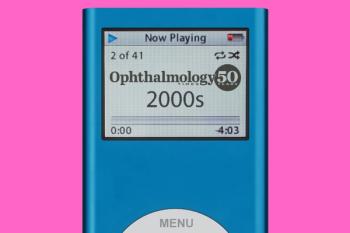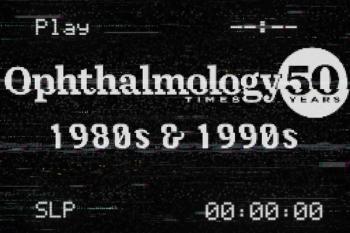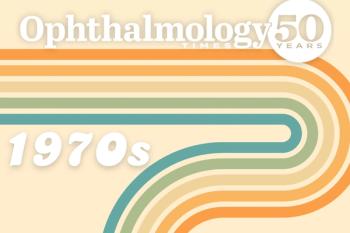
Measuring RNFL with OCT detects subtle differences in glaucoma progression
Optical coherence tomography detects abnormalities and progressive thinning of the retinal nerve fiber layer better than measurement of the visual fields.
It goes without saying that the features that are paramount for any optical coherence tomography (OCT) instruments are image quality and the abilities to identify artifacts and interpret scans regardless of the desired structures to be viewed or the disease process involved.
The various commercially available devices work in different ways and understanding those differences may matter during evaluations.
Truth in imaging
In order to ensure image quality in spectral-domain OCT, the tissue image should be in the top third of the scanning window and the tissue should appear as flat as possible.
The condition of the ocular media, including a dry cornea, refractive errors, cataracts, and vitreous opacities can adversely affect the image quality, according to Joel S. Schuman, MD, professor of ophthalmology, neuroscience and physiology, neural science, biomedical engineering and electrical and computer engineering, and chairman of ophthalmology,
According to the manufacturers, acceptable signal strengths and quality scores for the four most widely used OCT instruments are as follows: for the Cirrus (Carl Zeiss Meditec) and Avanti (
In instruments in which acceptable images are not obtained, the results can be segmentation errors, i.e., incorrect measurements of tissue characteristics.
Ferreting out the faults
A number of these faults can play tricks on the eyes.
Blood vessel shadows are the products of vessels containing flowing blood. Mirror images or inverted images can result from the position in the scan window at which the image was acquired. Blinking artifacts, which appear as black bands across an image, indicate that the signal was interrupted during a blink or a segmentation error occurred, and eye movement artifacts can distort the shapes of the tissues in an image, Dr. Schuman explained.
Measuring the retinal nerve fiber layer (RNFL)
The health of this structure is assessed in a circular area centered on the optic nerve head. This area of measurement can be used on any of the previously mentioned instruments to obtain a robust assessment of the RNFL.
A volumetric measurement that includes the tissue beyond the old fashioned scan circle is best to determine the development of glaucoma as well as the shape and character of the abnormality, he said. When viewing output from the devices, abnormalities have a particular location and shape.
“This provides the clinician with confidence regarding whether an abnormality is indeed glaucoma,” Dr. Schuman explained. “If the abnormality is located in a place where glaucoma generally develops along with a pattern typically seen in glaucoma, there is a high likelihood that the abnormality is glaucomatous.”
Glaucoma progression
When evaluating glaucomatous progression over time, Cirrus contains the most complete glaucoma progression analysis software, according to Dr. Schuman. Data obtained from the extracted circumpapillary scan provide the average, superior, and inferior RNFL thicknesses and a statistical analysis that describes if there is a significant difference from “no change” in the regression line.
The changes in average cup-to-disc ratio are analyzed, and RNFL thickness profiles over time and on a specific day are provided analyzed for change over time. Another nice feature is a table of numerical values of the parameters for each visit with significant changes emphasized.
The Spectralis provides a serial analysis of progression, the results of which are depicted in graphs from a patient’s scan. No statistical program is included to document significant progression changes.
The Optovue provides changes in both the ganglion cell count (GCC) and the RNFL thickness. The changes in RNFL thickness are documented in a graph from baseline to the current day; the significant changes in the GCC are highlighted in a table. For both parameters, the device provides a statistical test for trend. “With each machine, when the RNFL becomes very thin, there is a floor effect, that is, the point at which the instrument can no longer measure the RNFL or the GCC,” Dr. Schuman cautioned.
“Clinicians must be careful and not be fooled into thinking that the patient is stable, when in fact the RNFL is so thin that the machine cannot determine that the glaucoma is worsening.”
Take-home points
OCT can detect structural RNFL abnormalities and progression. OCT outperforms measurement of the visual fields (VFs) in detecting progression in early glaucoma. VF progression can be measured even when the VF is normal. In cases of moderate and advanced glaucoma, RNFL progression rate decreases due to a floor effect. It is important to monitor both the RNFL and VF when assessing glaucoma progression, especially in patients with moderate to advanced disease,” Dr. Schuman summarized.
Newsletter
Don’t miss out—get Ophthalmology Times updates on the latest clinical advancements and expert interviews, straight to your inbox.





















































.png)


